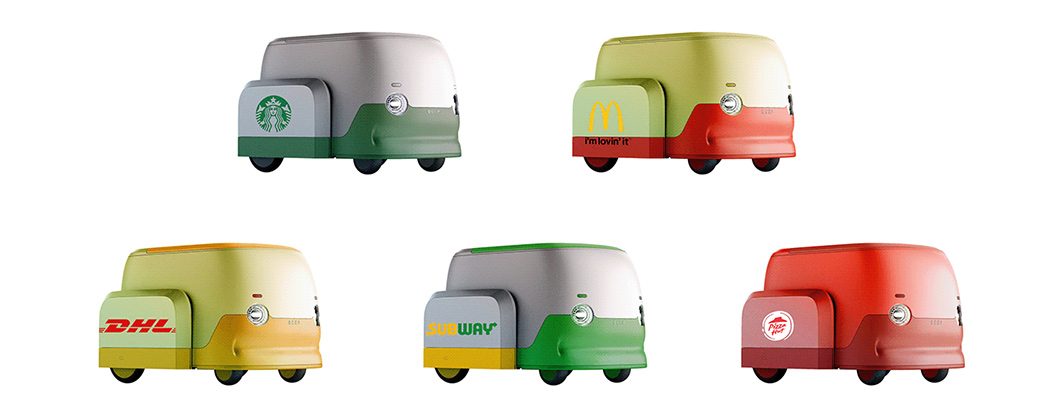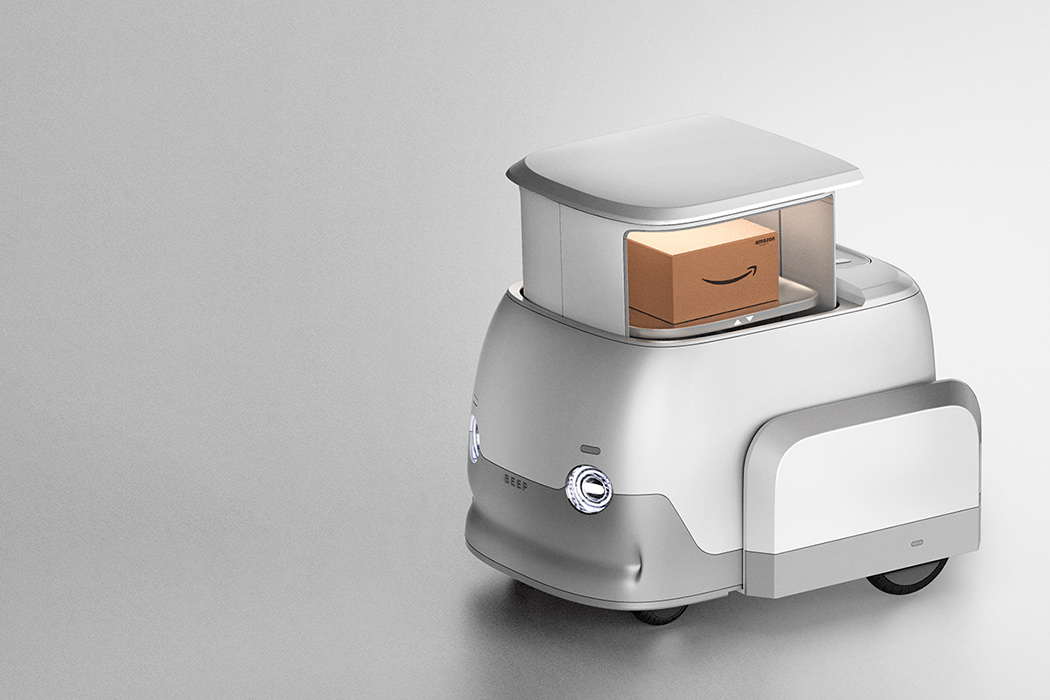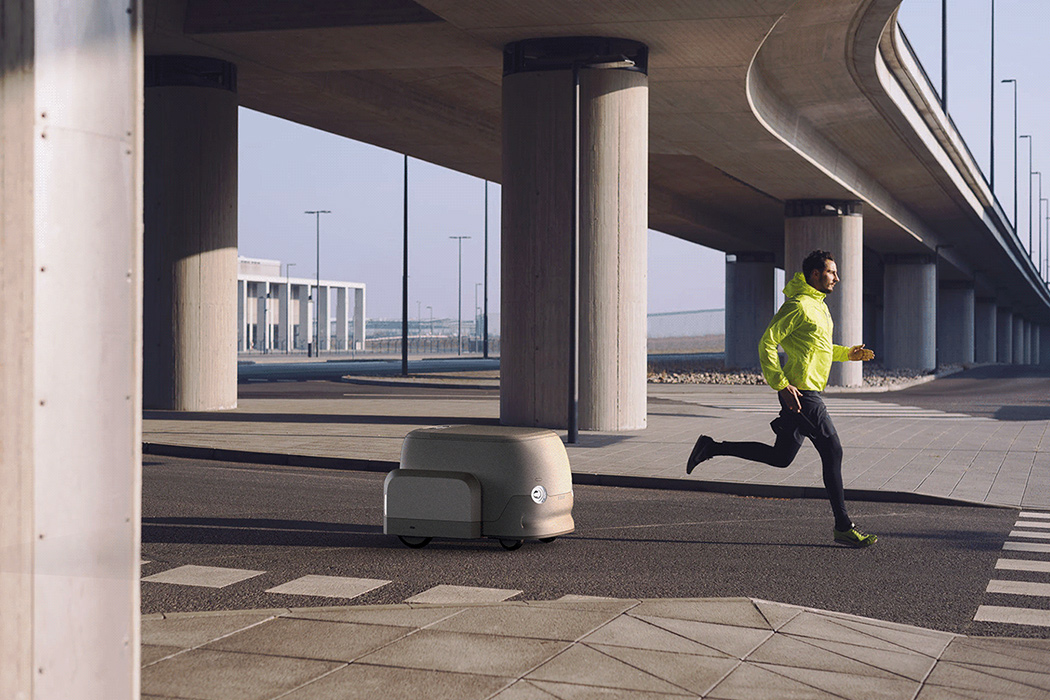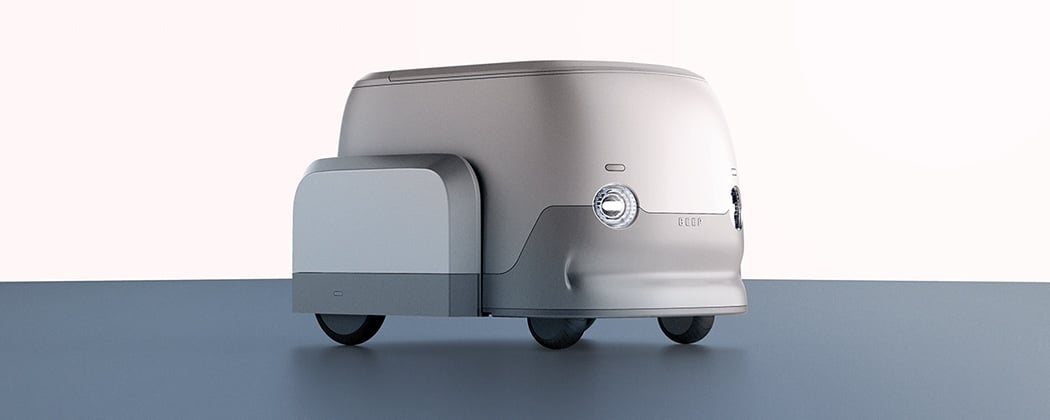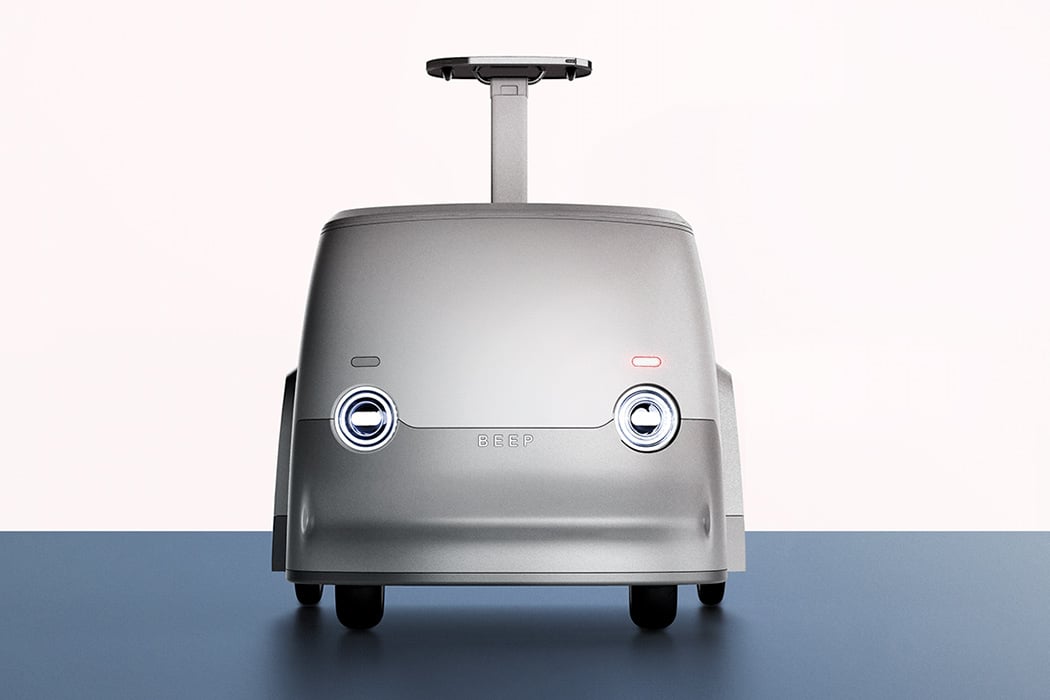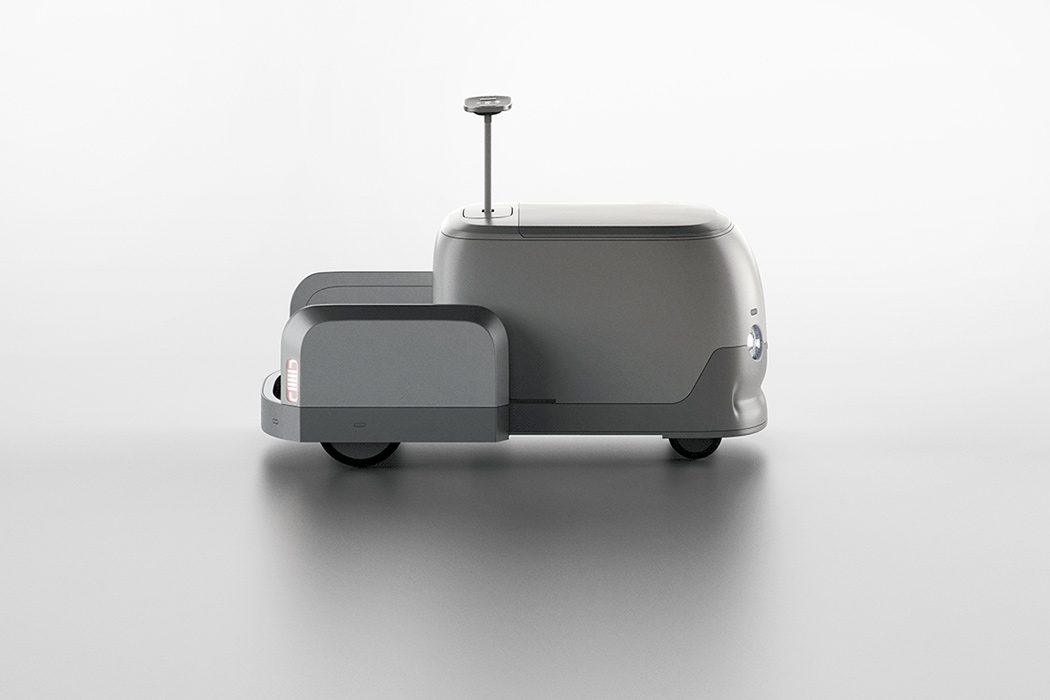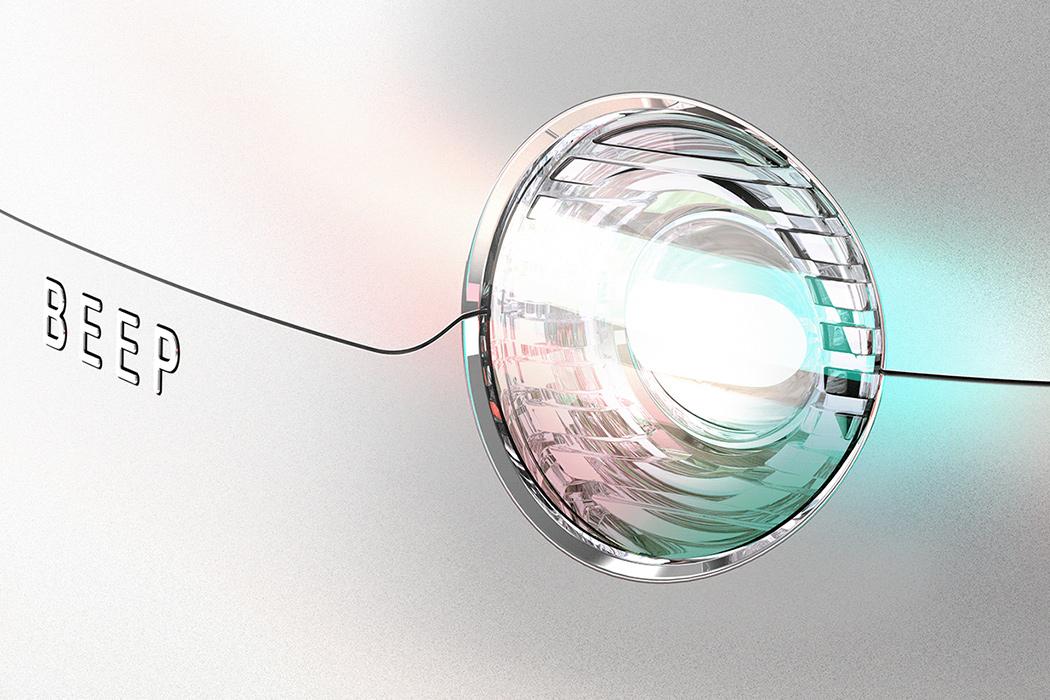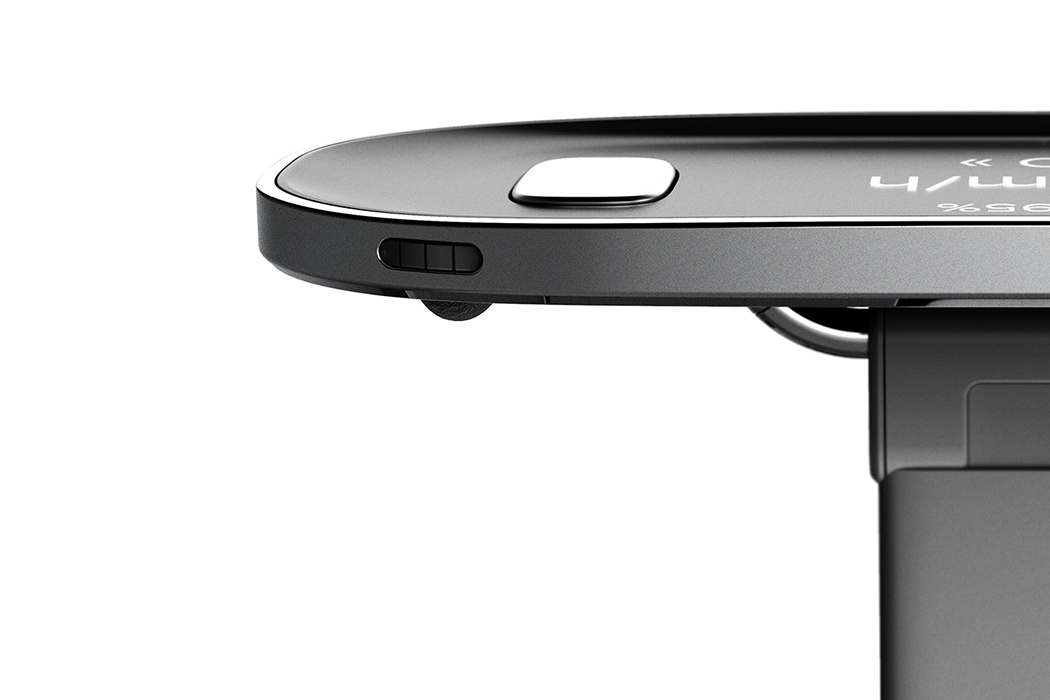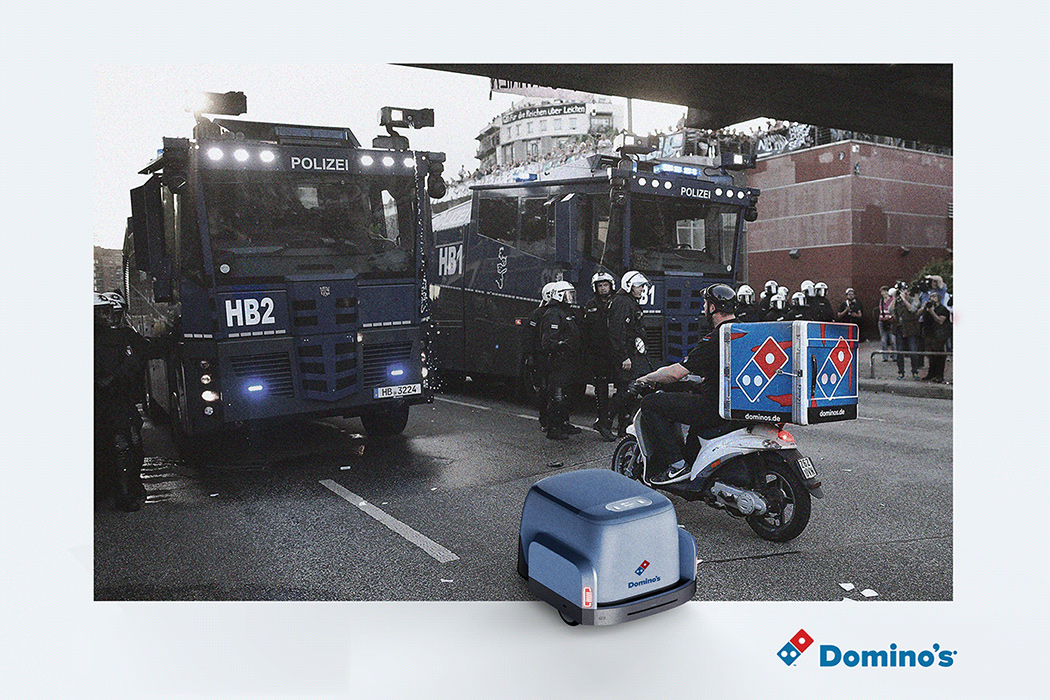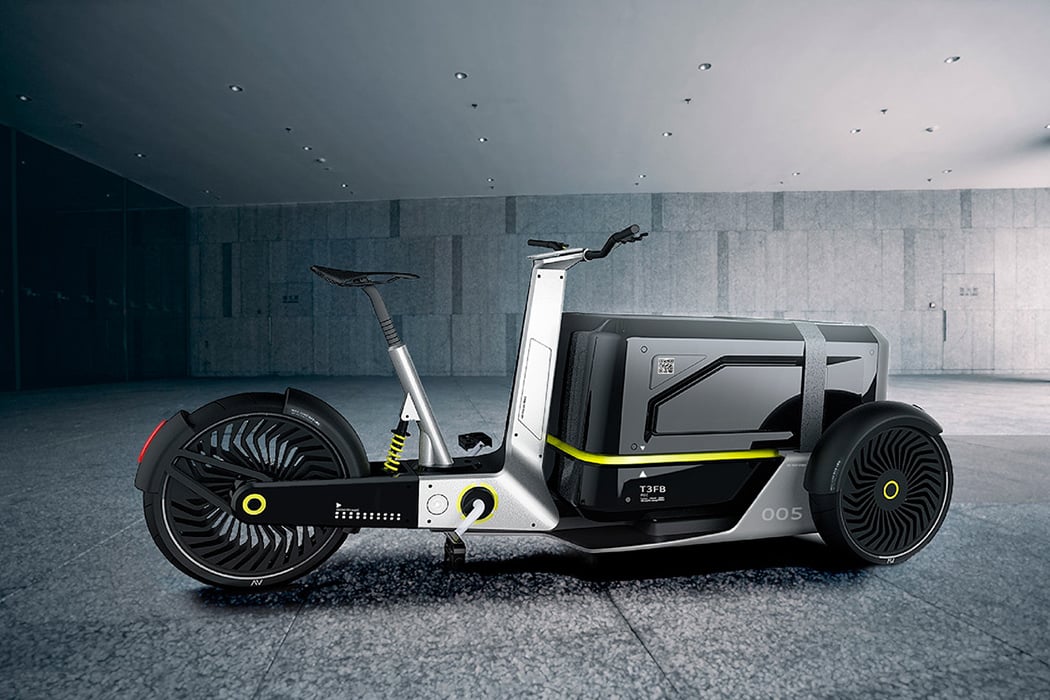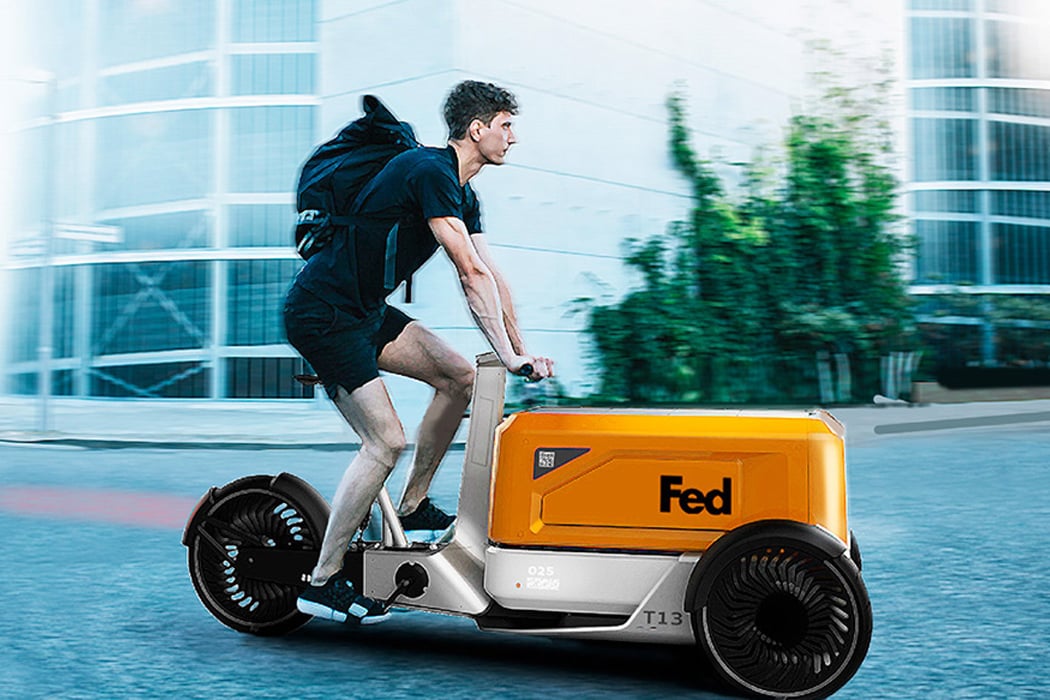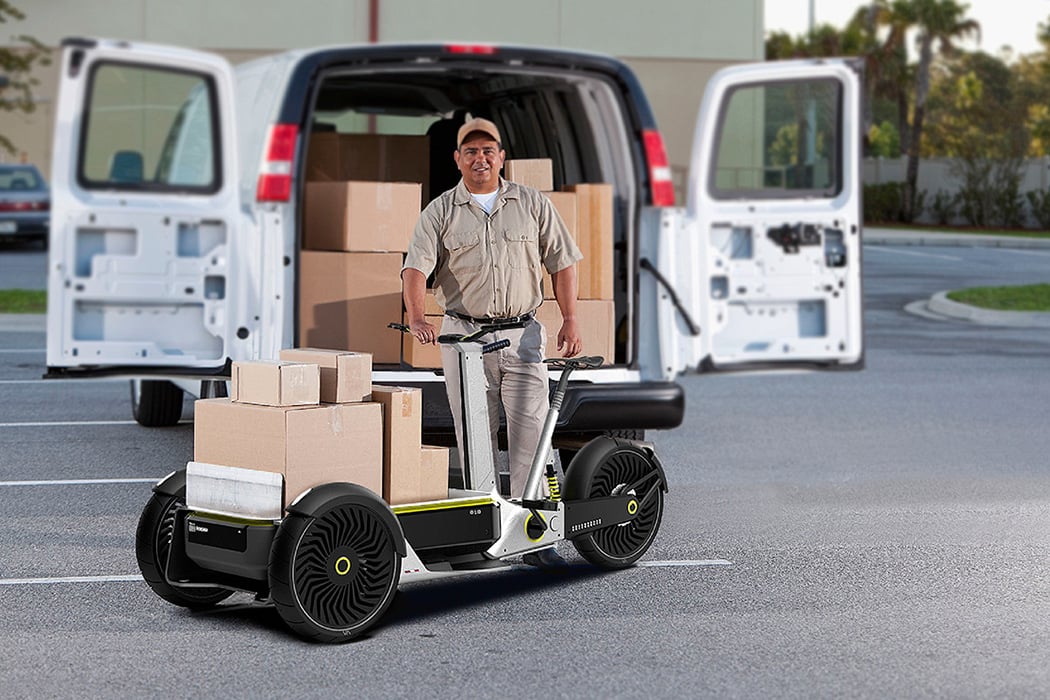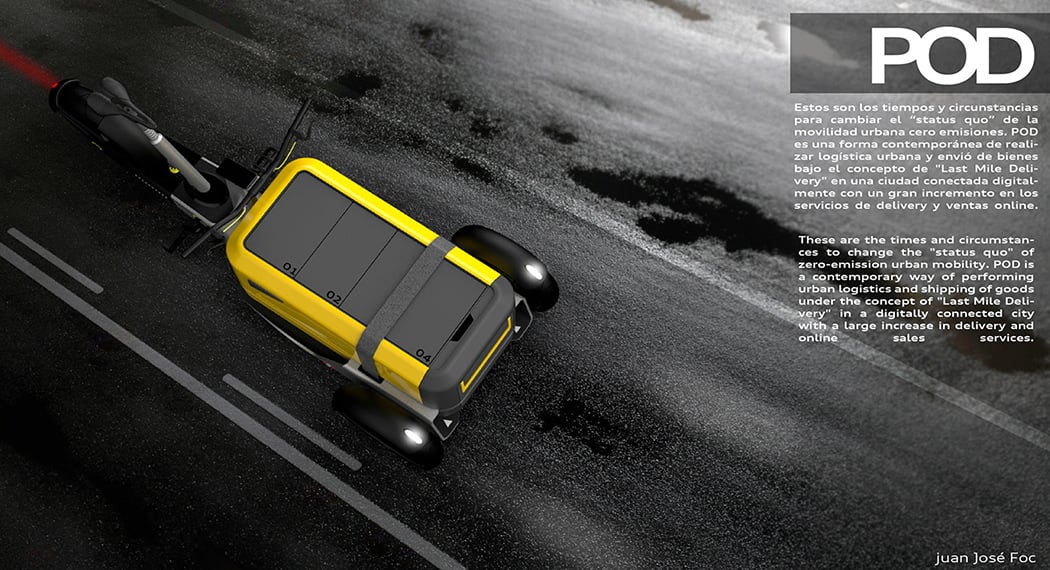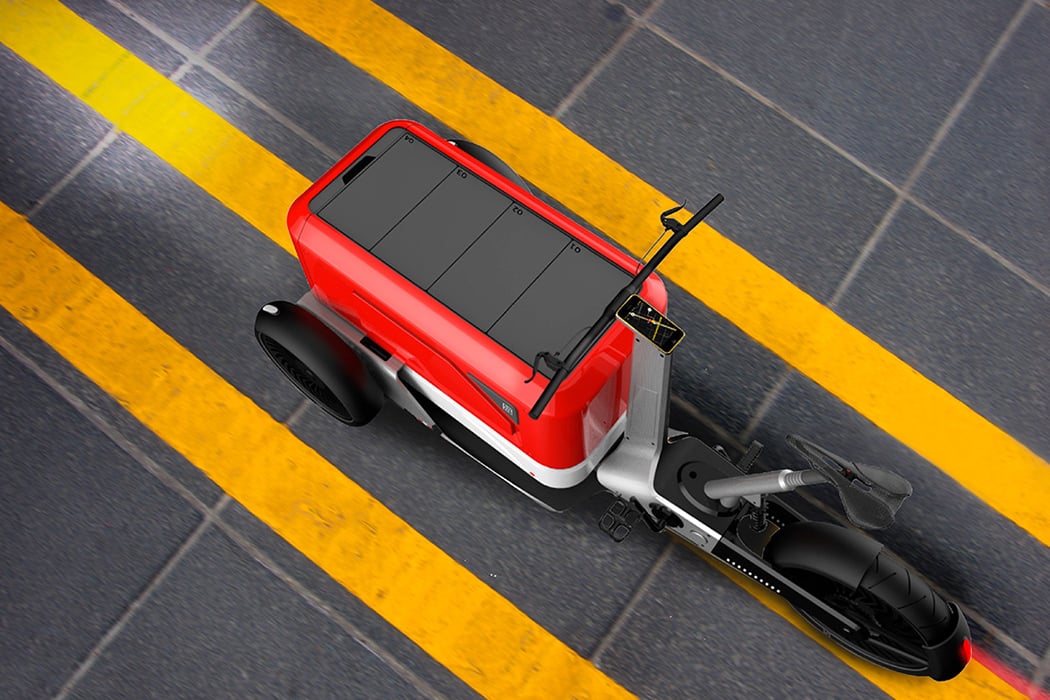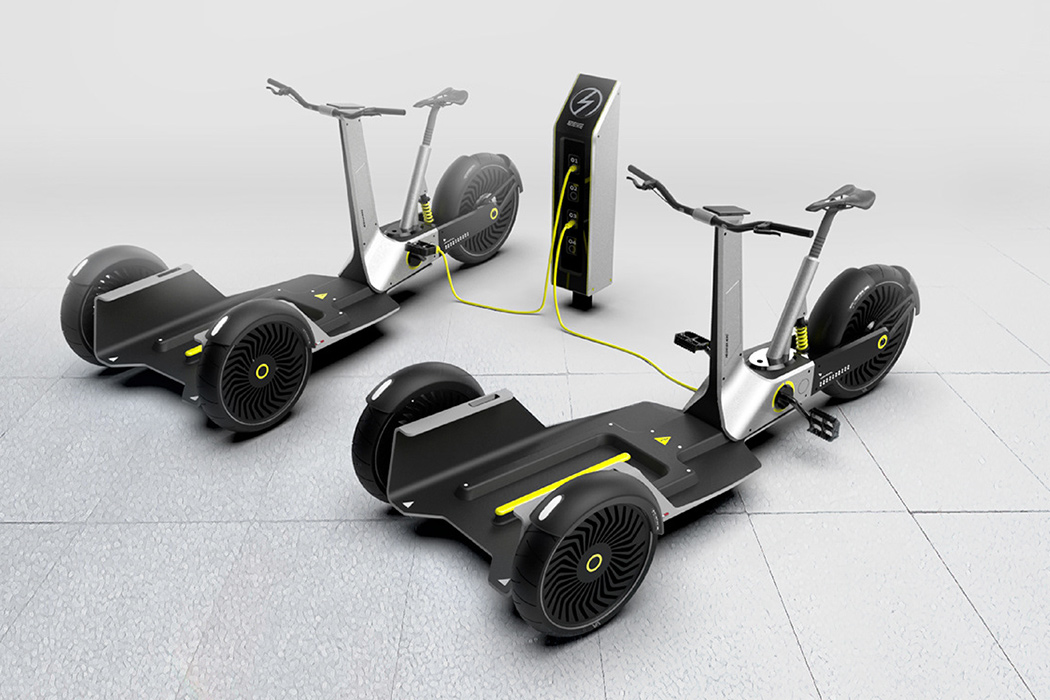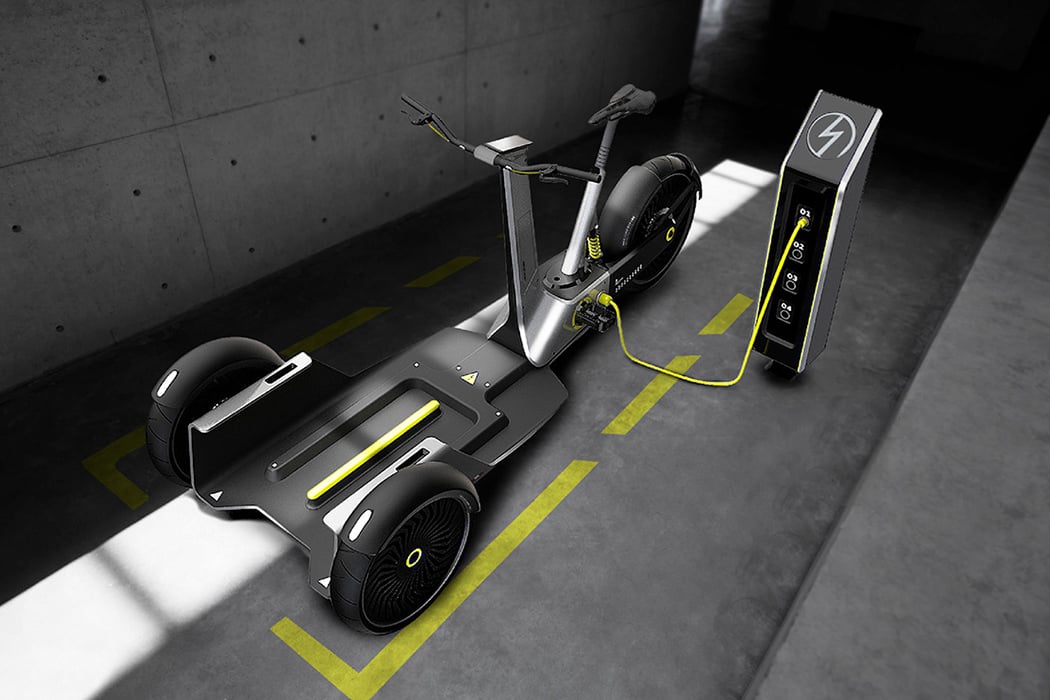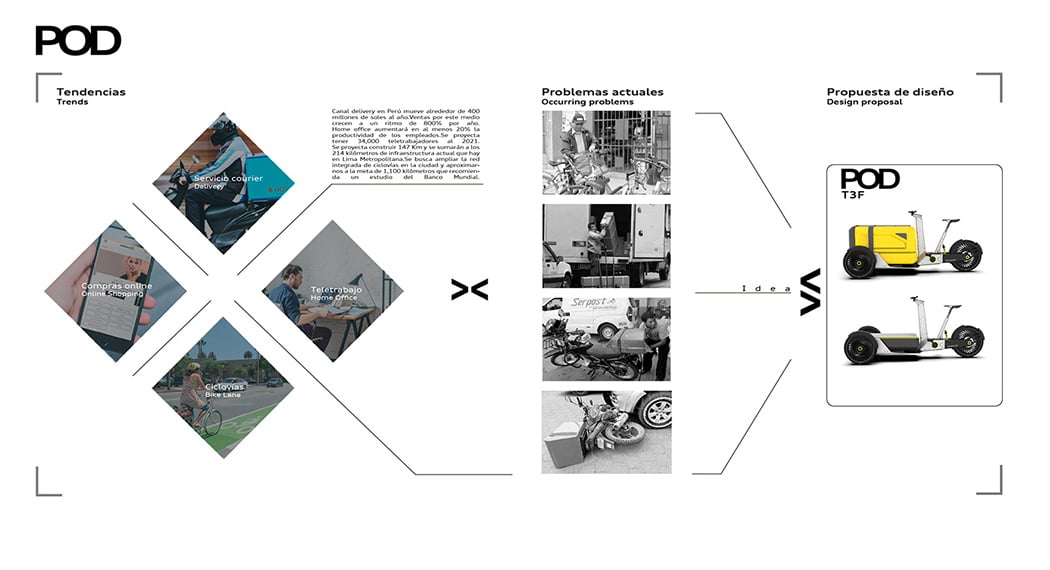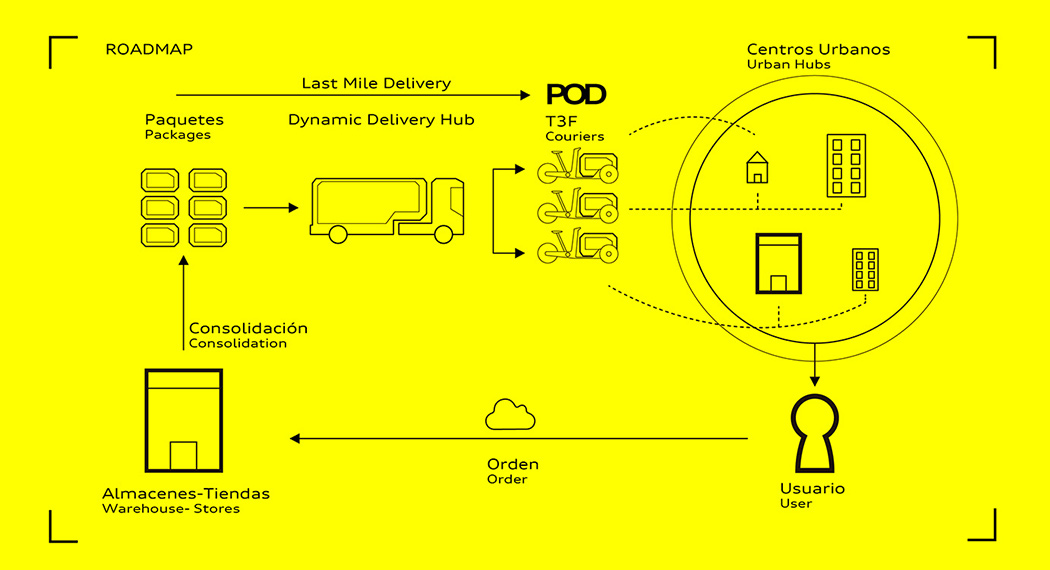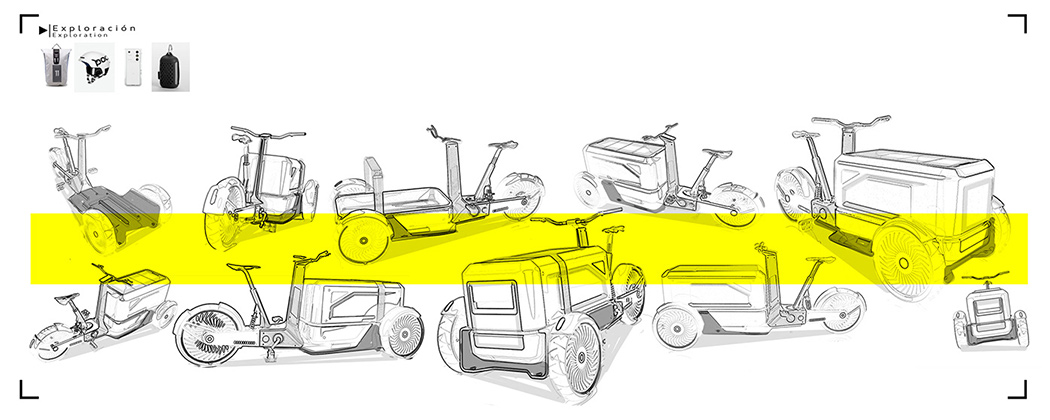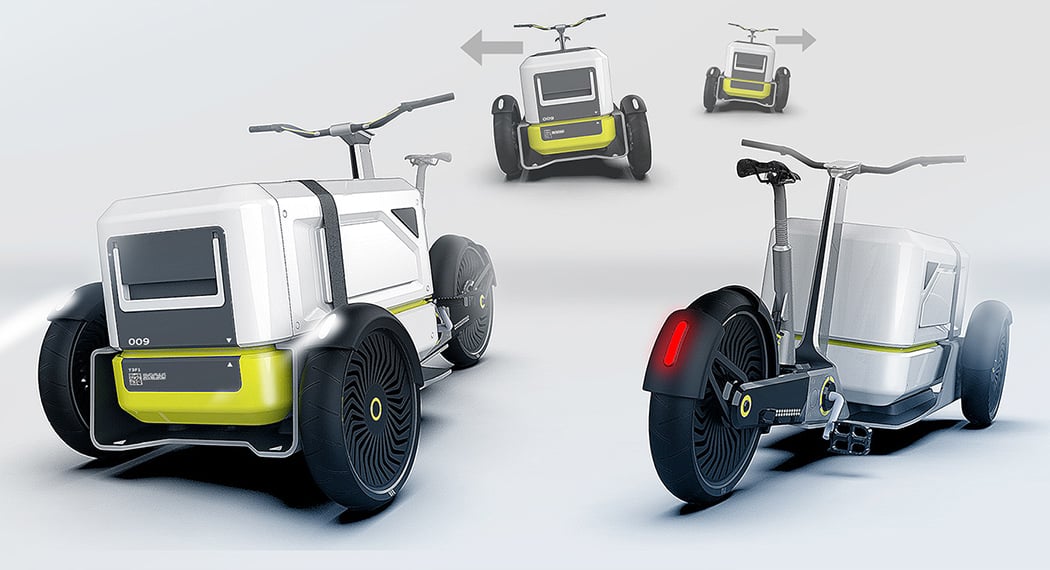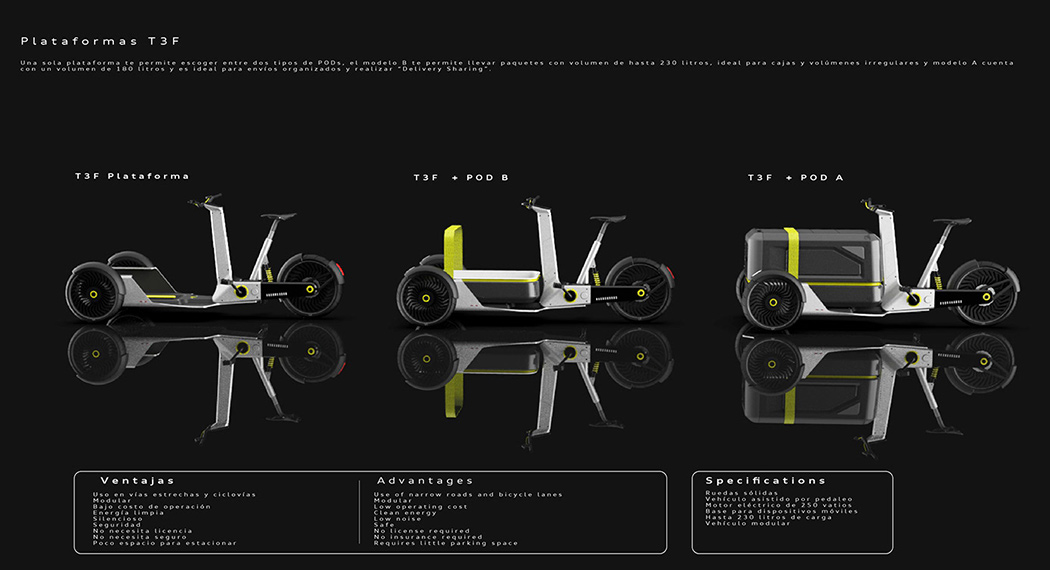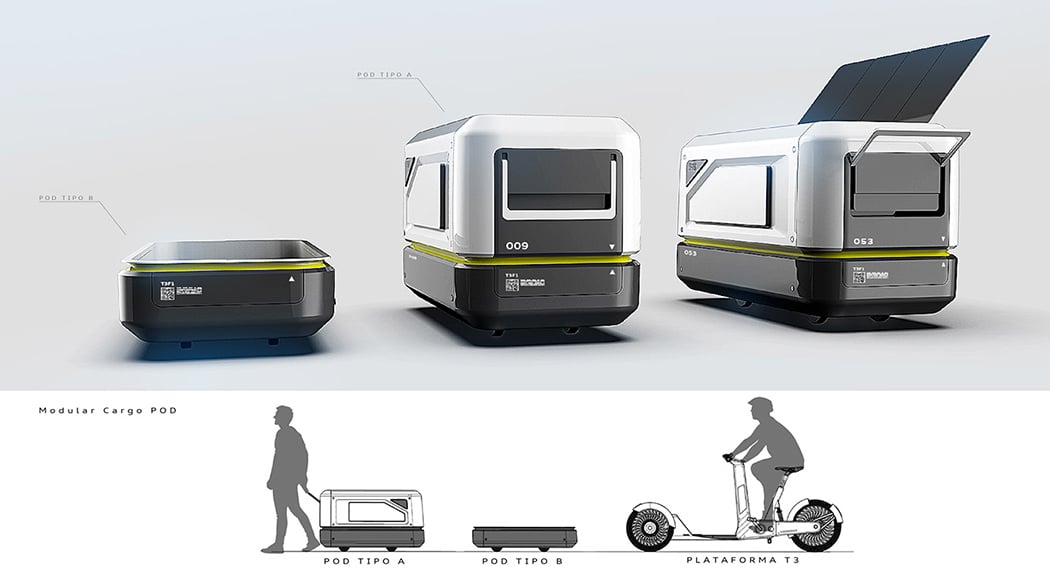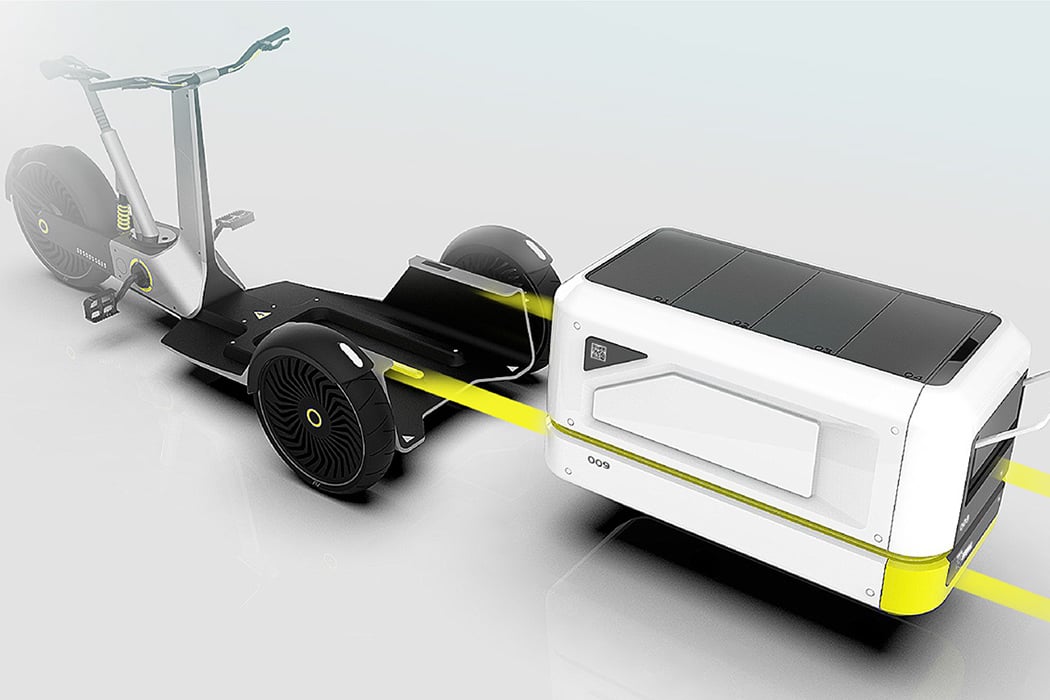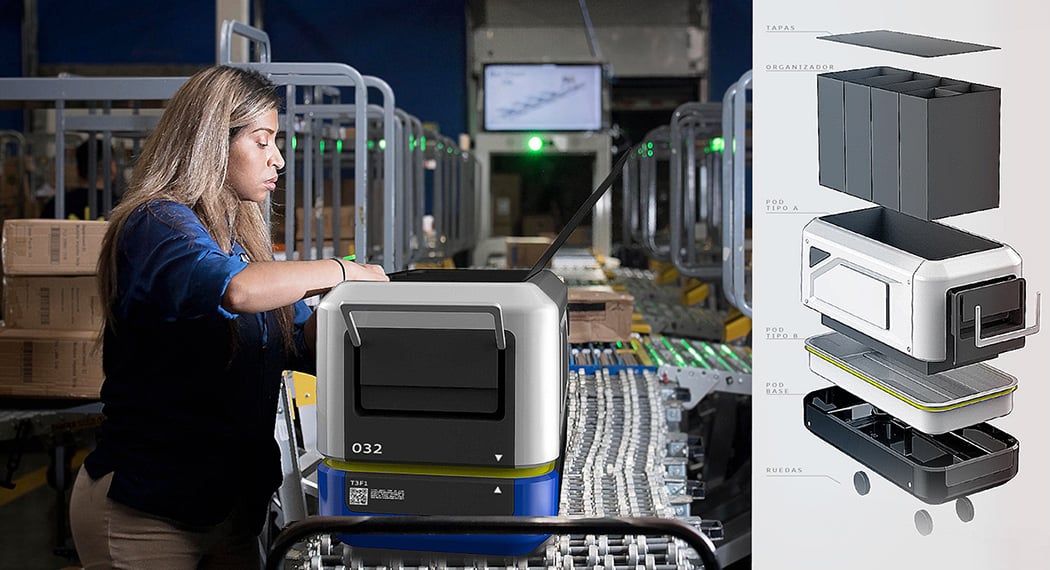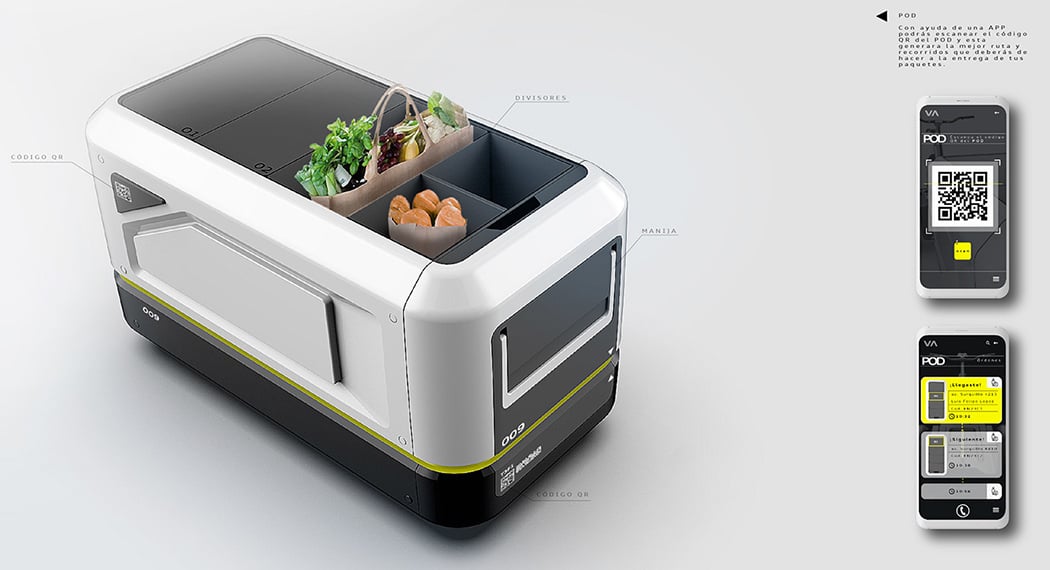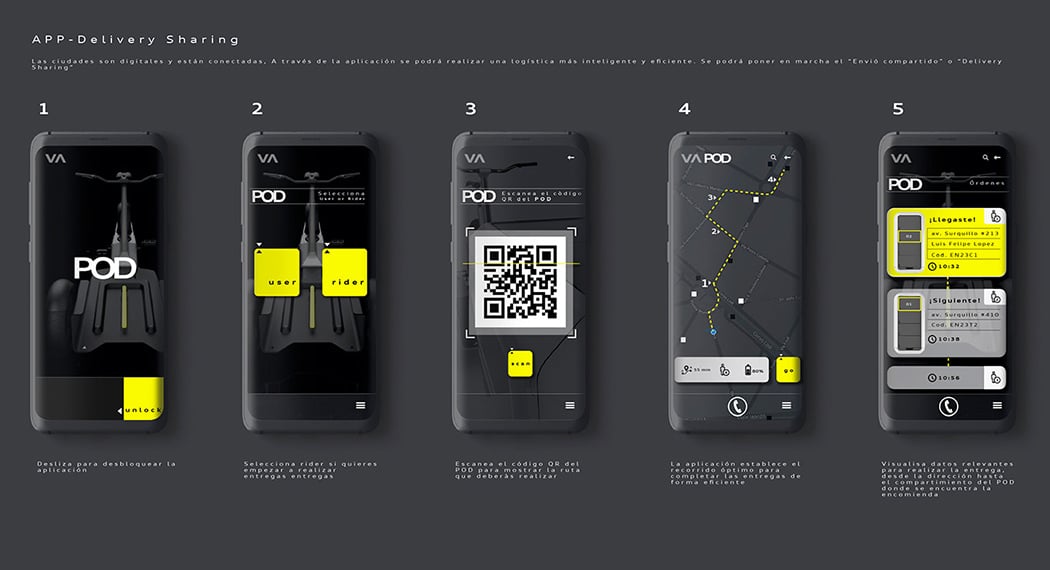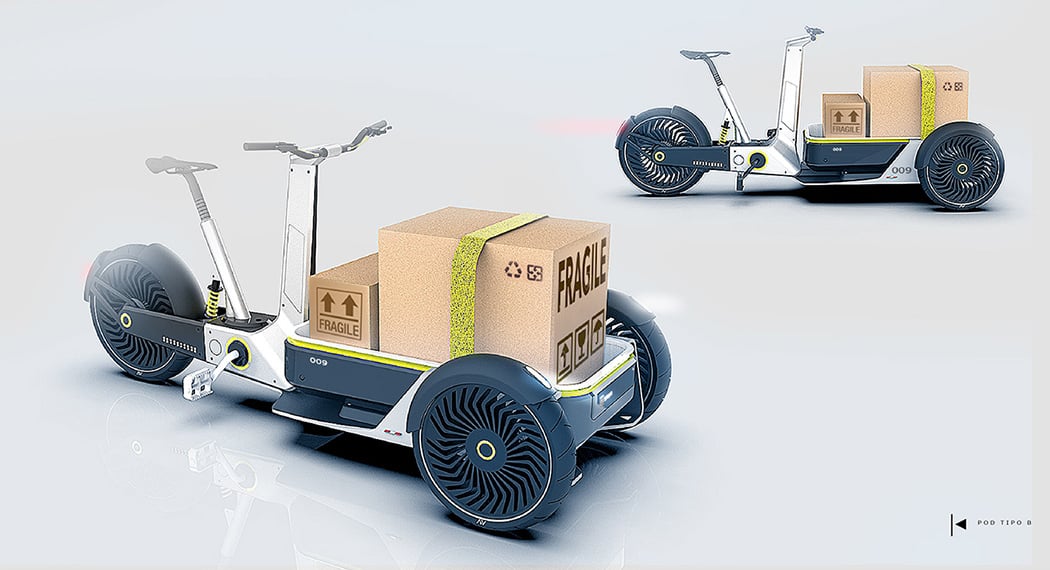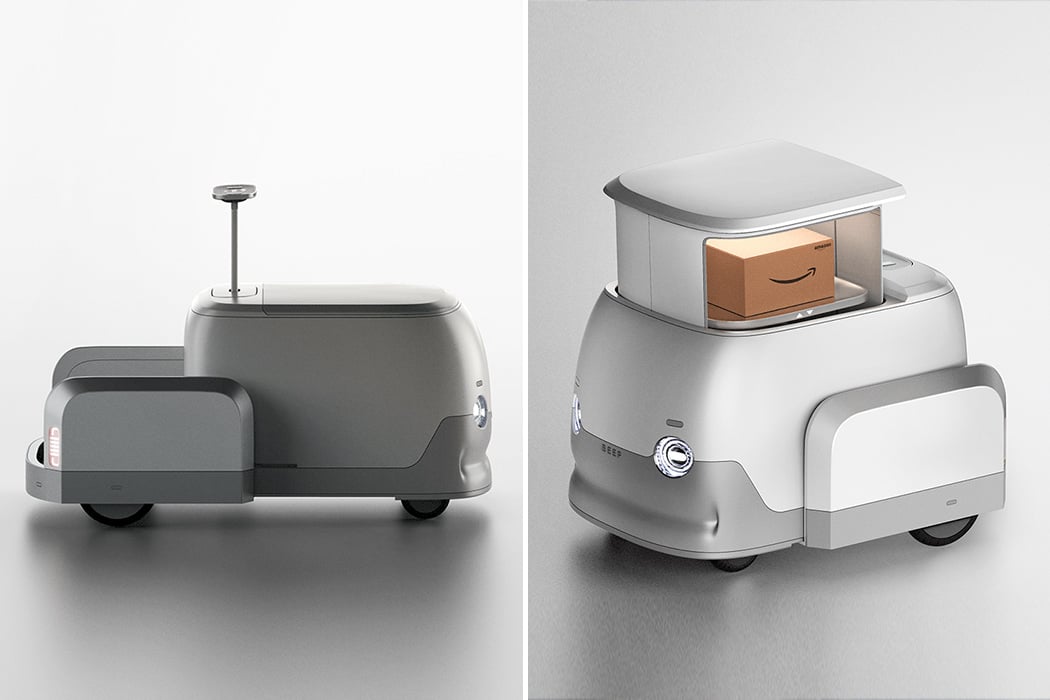
In looking for ways to reduce carbon emissions, especially in the transportation industry, designers have proposed solutions that would decrease carbon emissions from delivery trucks. Why so specific? The problem with these short-distance deliveries is that they burn a disproportionate amount of fuel compared to the size of the package being dropped off.
Here’s where we introduce the Beep, a self-driving vehicle that was designed for these short travels. On Yanko, we’ve featured other green transport vehicles that operate under similar principles: electric-powered bikes or scooters that mail carriers can use for the “last leg” of the package’s journey. The Beep stands out because, unlike other proposed designs, it doesn’t require a driver.
How would this system work in practice? Well, the Beep, with its short, compact design, can easily maneuver through local roads and tight alleys. Since the vehicle drives itself, the restaurant chains or delivery services that use them won’t have to train employees to use them. Quick note: the Beep can also be driven manually if preferred. In those cases, a handle and standing platform will pop out from the back of the Beep, allowing the user to ride it like an electric scooter.
The Beep’s storage container is sturdy enough to protect its cargo from harm. Additionally, the storage container is height-adjustable, so packages of any size can fit securely. Groceries or other food items will also stay fresh thanks to its climate-controlled interior. These two features demonstrate the Beep’s diverse capabilities — particularly, how it can be used to service a variety of different industries.
Designer: Dawn Studio
